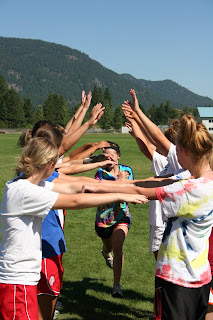As an organization our initial year has been chocked full of adventure and success. We have reached 200 fans on Facebook and keep growing! We were have created a new collaborative relationship with the Winter Wildlands Alliance (WWA) and have been designated as a WWA SnowSchool, the only one in Northern Idaho! The SnowSchool is the nations largest on snow provider of winter ecology curriculum and SOLE is one of 47 providers offering this dynamic experiential curriculum.
Additionally, SOLE has now been licensed as an outdoor therapeutic program in Western Montana and we are currently accepting enrollment applications for our SOLE Journey Experiences program!
This intentional SOLE Journey Experience program is designed for:
- Individuals in search of a multi-day expedition which focuses on character and leadership development, environmental awareness and stewardship, human and natural history, as well as, outdoor living skills.
- Professionals, schools, and/or programs interested in an intentionally-designed short-term behavioral intervention to reinforce positive behavior and extinguish negative behavior.
- Professionals, schools, and/or professionals interested in a short-term placement with a transition back into their current setting.
- Parents in search of a preventative and assessment measure prior to sending their child to a wilderness and/or residential program.
- Professionals who provide service for "families in need" recommending any of the previously mentioned services.
 Spring has sprung in North Idaho and we are now settling in to longer days as we are busy planning our summer schedule. As communities and organizations of North Idaho and Western Montana, and beyond, continue to embrace SOLE we are constantly amazed at how much support there is for the programming that we offer. As we work towards our vision towards bring exceptional experiential and outdoor education to our region our summer season is looking great. This summer we are offering a diverse portfolio of offerings to include collaborations with local non-profits and additional stand-alone programming as part of our SOLE Seasonal Experiences.
Spring has sprung in North Idaho and we are now settling in to longer days as we are busy planning our summer schedule. As communities and organizations of North Idaho and Western Montana, and beyond, continue to embrace SOLE we are constantly amazed at how much support there is for the programming that we offer. As we work towards our vision towards bring exceptional experiential and outdoor education to our region our summer season is looking great. This summer we are offering a diverse portfolio of offerings to include collaborations with local non-profits and additional stand-alone programming as part of our SOLE Seasonal Experiences. Some of our Summer SOLE Seasonal Experiences include, but are not limited to:·
- Wilderness Awareness Experiences - 6/15, 9/14, 9/23 (Montana Wilderness Association); 6/16 (Friends of Scotchman Peaks)
- Father’s Day Mammal Tracking & Woodland Ecology Experience - 6/17
- Kayak Touring Outdoor Technical Skills Experiences - 6/22-6/25; 8/10-8/13; 9/06-9/10 (Eureka Institute)
- Autistic Adventurer Backpack Expedition - 7/15-7/21
- Selkirk Teen Backpacking Trek -7/22-7/28
- Youth Primitive Skills & Woodland Ecology Experience - 9/1-9/2
- Project LEAD – 8/5-8/9; 8/14-8/18
- Leave No Trace Trainer - 9/1-9/2
For the most updated list of SOLE Experiences please visit our calendar on our website. As we close this Spring Issue of Polaris Expeditions we look forward to seeing you on the trail or water this summer!






